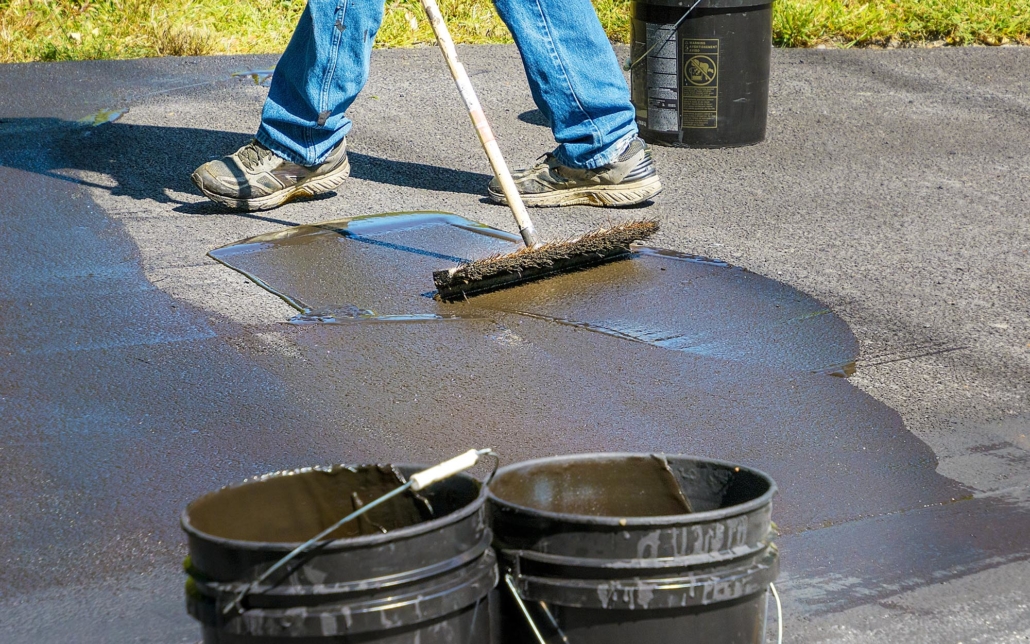Lasting Results: Asphalt Patch Repair Through Accuracy Sealing
Lasting Results: Asphalt Patch Repair Through Accuracy Sealing
Blog Article
Cold Mix Asphalt Vs. Hot Mix Asphalt: Which Is Right for You?

Structure Distinctions
Cold mix and hot mix asphalts differ significantly in their structure, with distinctive features that impact their performance and applications. Cold mix asphalt is created by emulsifying the asphalt binder with water and an emulsifying representative before mixing it with accumulation. This approach allows for the asphalt to be convenient at reduced temperature levels, making it perfect for momentary repairs and for use in chillier weather. Warm mix asphalt, on the various other hand, is manufactured at heats, normally in between 300-350 ° F, which helps to achieve much better compaction and a much more sturdy end product. The hot mix asphalt manufacturing procedure involves heating up the accumulation and asphalt binder independently before combining them at the asphalt plant.
Furthermore, chilly mix asphalt often tends to be much less thick and a lot more versatile than hot mix asphalt. This flexibility makes it better suited for locations with higher degrees of motion, such as driveways or roads with heavy traffic. In comparison, warm mix asphalt is understood for its high longevity and resistance to rutting and fracturing, making it a recommended choice for highways and high-traffic roads where durability is vital.
Setup Process Variances
The procedure of installing chilly mix and warm mix asphalt displays significant variances in their requirements and procedures. In comparison, warm mix asphalt demands a more sophisticated installment process. Due to the heating demands, warm mix asphalt installations are usually lugged out by professionals with specialized devices, making sure an extra structurally sound and long-term result.
Longevity and Longevity Elements
When considering asphalt options, longevity and durability are essential factors to review for long-term pavement performance. Warm mix asphalt (HMA) is understood for its extraordinary sturdiness and longevity.
In regards to longevity, HMA typically outmatches CMA because of its superior toughness and resistance properties. HMA sidewalks have a longer service life, calling for less constant repair work and upkeep, which can equate to set you back savings in the lengthy run. Furthermore, HMA sidewalks are much more conveniently adjustable to fulfill particular task demands, better enhancing their longevity.
Expense Factors To Consider
Thinking about the monetary ramifications is a vital facet when reviewing the selection in between warm mix asphalt (HMA) and chilly mix asphalt (CMA) for pavement projects. While the initial cost of warm mix asphalt this content is typically greater than that of cool mix asphalt, HMA usually provides a more cost-effective solution in the lengthy run due to its remarkable toughness and durability.
In addition to material expenses, it's important to take into consideration the i was reading this costs linked with installation and upkeep when contrasting HMA and CMA. Eventually, the choice between HMA and CMA must take right into account not just the preliminary cost however additionally the long-term monetary effects to determine the most economical option for the particular sidewalk task.
Environmental Impact Contrast
Contrast of the ecological impacts between warm mix asphalt (HMA) and cool mix asphalt (CMA) reveals unique distinctions in sustainability techniques. HMA manufacturing requires heats, causing raised energy consumption and greenhouse gas discharges. The procedure additionally releases volatile organic substances (VOCs) and unsafe air pollutants (HAPs) into the environment. In comparison, CMA is generated and used at reduced temperatures, reducing energy use and exhausts substantially. The reduced manufacturing temperature levels of CMA result in decreased fuel consumption and lower levels of CO2 emissions, making it a more environmentally friendly option.
In addition, making use of CMA commonly entails reusing existing asphalt pavement, promoting source preservation and minimizing the quantity of waste sent to landfills. article This reusing facet even more improves the sustainability of CMA compared to HMA. Overall, when taking into consideration the ecological effect, CMA emerges as a more eco lasting choice due to its reduced energy requirements, lowered discharges, and the potential for reusing existing products. By opting for CMA over HMA, roadway building and construction jobs can contribute favorably to environmental preservation efforts.
Conclusion
Finally, the option in between cold mix asphalt (CMA) and warm mix asphalt (HMA) depends upon various elements such as composition, installation process, sturdiness, long life, price, and environmental influence. asphalt repair. While CMA offers a fast and affordable remedy for minor repair work, HMA ensures remarkable resilience and longevity for rush hour areas. Think about these elements meticulously to establish which kind of asphalt is the ideal choice for your paving needs

Taking into consideration the monetary implications is an important facet when examining the choice in between hot mix asphalt (HMA) and chilly mix asphalt (CMA) for pavement tasks. While the initial cost of warm mix asphalt is generally higher than that of cool mix asphalt, HMA often offers a much more cost-effective option in the long run due to its superior durability and longevity. asphalt repair.Contrast of the ecological impacts in between warm mix asphalt (HMA) and cold mix asphalt (CMA) exposes distinctive distinctions in sustainability methods.In final thought, the option in between chilly mix asphalt (CMA) and hot mix asphalt (HMA) depends on different factors such as make-up, setup procedure, resilience, longevity, expense, and ecological influence
Report this page